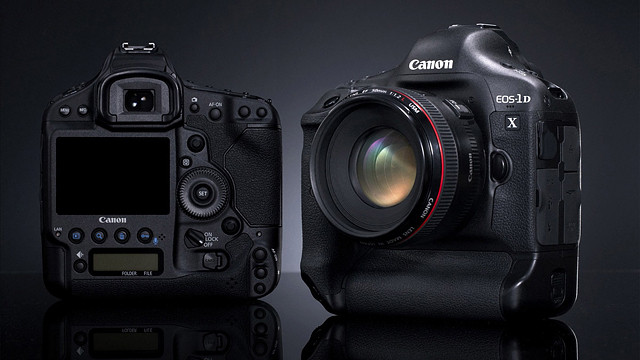
EOS 1DX field review and impressions
Static image quality comparison
In the past upgrading to a new 1 series camera was a no-brainier task for wildlife photographers. This time the new image sensor brings a dilemma for wildlife photographers. The full-frame CMOS image sensor in the 1DX is approximately 70% larger in area compared to the APS-H sensor in the EOS 1D Mark IV, offering a significant advantage in SNR at RAW level. However in principal, this is only true if the entire sensor area is used for imaging, i.e. without too much cropping. On the other hand, the pixel pitch for 1DX is 6.95um compared to 5.7um for EOS 1D Mark IV’s APS-H sensor. The EOS 1D MarkIV sensor has about 44% more pixels per unit area which gives it a respectable resolution advantage on paper. Wildlife and avian subjects are sometimes difficult to approach in the field, in these cases photographers are limited by the focal length of the optics. It can be readily seen that in these cases the balance in overall image quality can tip in favor of 1D Mark IV due to its higher resolution for rendering fine details. However Canon indicate the image sensor in 1DX is substantially improved compared to the 1D Mark IV and are confident it will produce an overall superior output. I will put this claim to the test.
I devised two different tests: I first photographed the target (a decoy owl with added feathers!) at equal field of view (FOV) for both cameras. In the field this would translate to shooting from a bit closer or using a longer lens with the EOS 1DX. I used a zoom lens, the EF 70-200 f/2.8L IS II to equalize the FOV. I used manual focus in live view mode to ensure sharpest focus was on the feathers. Since the total number of pixels is close (16 Mpixel vs. 18 Mpixel), I left the RAW output at 100%. Then I shot the same target at 200mm from equal distance. This translates to the focal-length limited case. In the 1DX file the subject will have fewer pixels. Since I am interested in making large prints and displaying my files on large high definition screens, I digitally up-sampled the 1DX file to normalize the size of the subject. I used bicubic method in Photoshop CS6 which I also use for printing. I used Canon DPP for RAW conversion and removed the chroma (color) noise so that the details can be evaluated clearly. For details of processing please refer to my guide.
The lowest ISO that I use is ISO 400, I use ISO 1600 pretty frequently. I usually do not exceed ISO 3200 with my EOS 1D Mark IV, for this test I pushed the ISO to 6400 to test if the new camera raises the bar on the ISO ceiling. The results are shown in Fig. 1-3 and Fig. 4-6 for the equal FOV and equal distance scenarios respectively.
Equal FOV
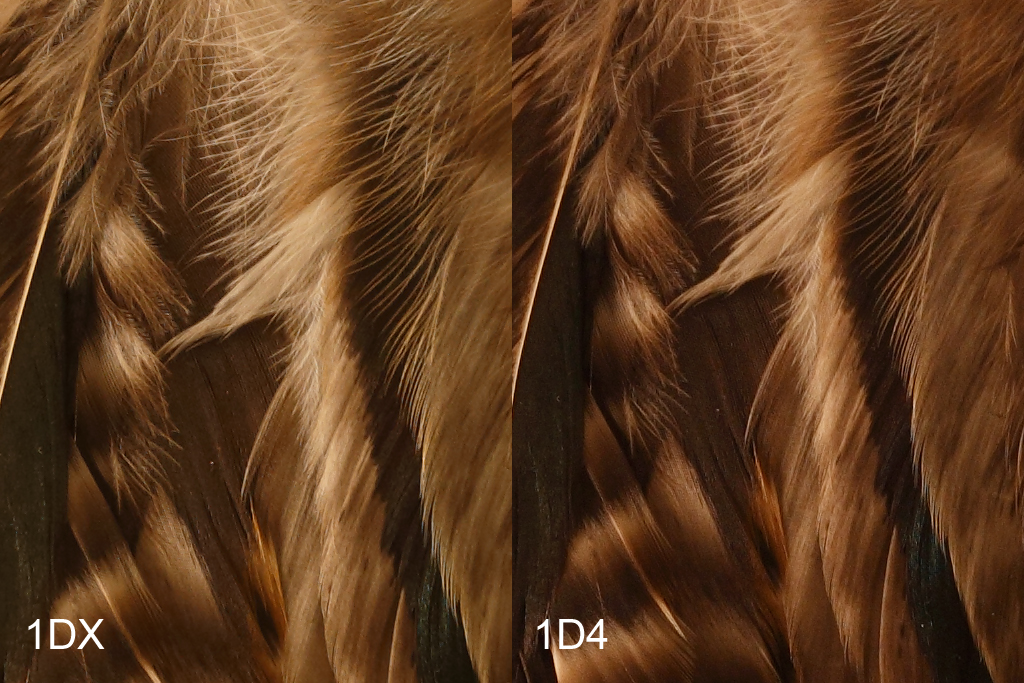
Fig. 1 Left EOS 1DX, right EOS 1D Mark IV. EF 70-200mm f/2.8 IS II at 200mm and 145mm respectively f/8 0.8sec ISO 400. Both files at 100%.
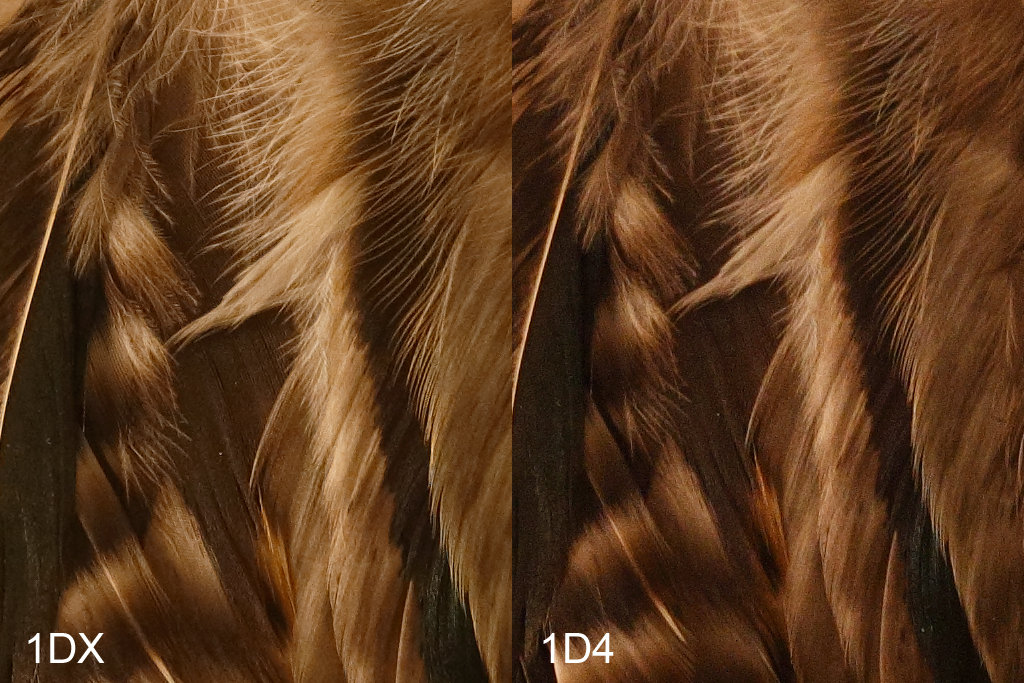
Fig. 2 Left EOS 1DX, right EOS 1D Mark IV. EF 70-200mm f/2.8 IS II at 200mm and 145mm respectively f/8 1/5sec ISO 1600. Both files at 100%.

Fig. 3 Left EOS 1DX, right EOS 1D Mark IV. EF 70-200mm f/2.8 IS II at 200mm and 145mm respectively f/8 1/20sec ISO 6400. Both files at 100%.
Equal distance
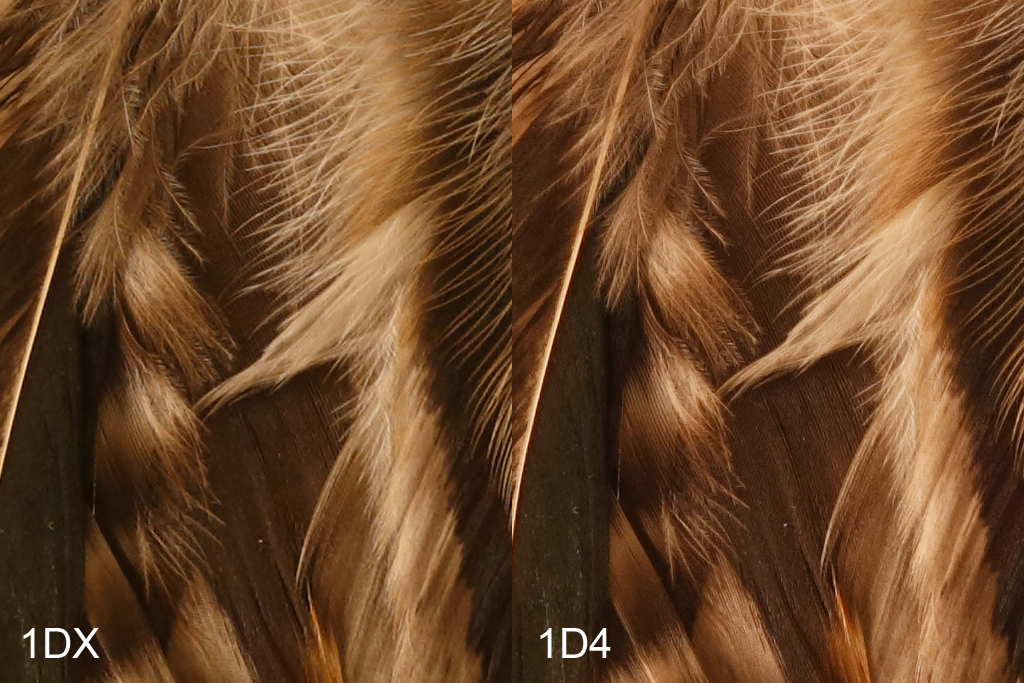
Fig. 4 Left EOS 1DX, right EOS 1D Mark IV. EF 70-200mm f/2.8 IS II both at 200mm , f/8 0.8sec ISO 400. Target in EOS 1DX file up-sampled digitally to match that of EOS 1D Mark IV using bicubic method in Photoshop.

Fig. 5 Left EOS 1DX, right EOS 1D Mark IV. EF 70-200mm f/2.8 IS II both at 200mm , f/8 1/5sec ISO 1600. Target in EOS 1DX file up-sampled digitally to match that of EOS 1D Mark IV using bicubic method in Photoshop.
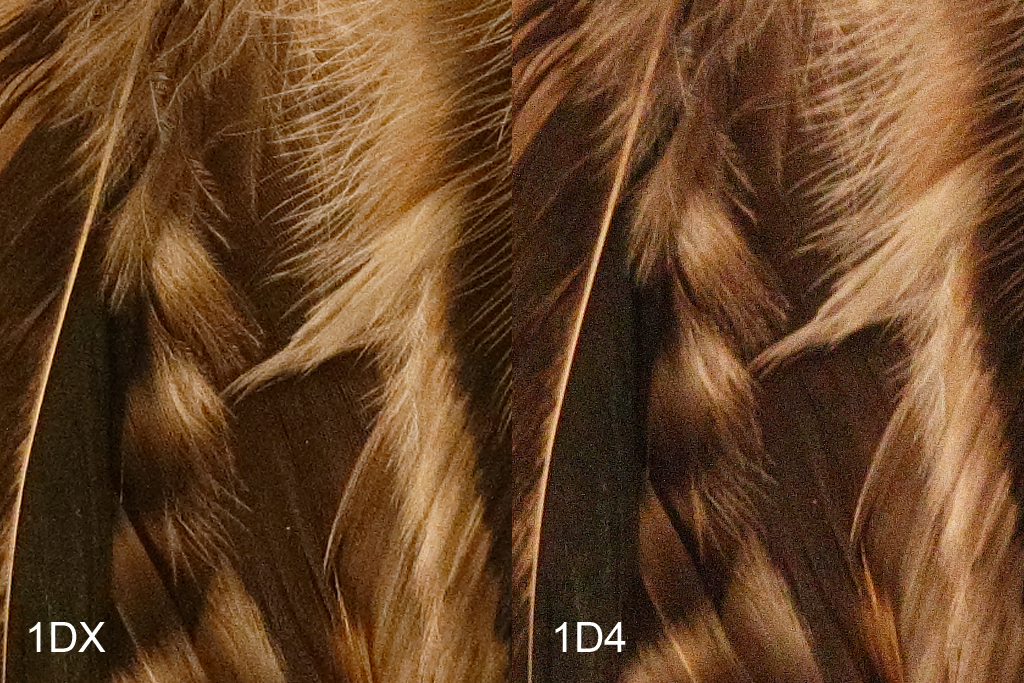
Fig. 6 Left EOS 1DX, right EOS 1D Mark IV. EF 70-200mm f/2.8 IS II both at 200mm , f/8 1/25sec ISO 6400. Target in EOS 1DX file up-sampled digitally to match that of EOS 1D Mark IV using bicubic method in Photoshop.
There is no surprise that the EOS 1DX is superior in the former scenario. Visual noise levels remain comparable at ISO 400, the 1DX starts to pull ahead at ISO 1600. At ISO 6400, the EOS 1D Mark IV fails to deliver a useful image with feather details annihilated by poor SNR. The EOS 1DX however still maintains a usable image that is significantly cleaner. I consider this ISO usable for my work.
The latter test is more tricky as you might expect. At ISO 400 the EOS 1D Mark IV’s higher pixel density does render finer details while visual noise level is comparable. At ISO 1600 the two files are closer while 1DX file looks cleaner despite the modest digital up-sampling and even shows ever slightly more detail in some areas where contrast is low. At ISO 6400 it is again a clear win for the EOS 1DX (notice how EOS 1D Mark IV has lost feather details).
So we can see that, even in the focal length limited situations, the EOS 1DX performs better at higher ISOs. This proves that Canon have made measurable improvements to the image sensor, or the readout circuit or both. In contrast, I did not see such improvement when comparing EOS 5D Mark III with EOS 5D Mark II.
Real-world avian photography is a combination of very different situations on the other hand. When I traveled to Haines, AK last month for photographing bald eagles, the eagles were close such that often we had to take off the tele-extenders to avoid clipping. Even without the extender, some frames were clipped due to the eagles’ size and proximity. In contrast, when I photograph white-tailed kites, the small skittish raptors in California, I usually use the tele-extender 1.4X all the time and prefer working with longer focal lengths. Therefore, I do not personally believe avian photography can be labeled one way or the other. There will be situations where the EOS 1D Mark IV will produce a file with finer detail overall but there are probably more situations where the EOS 1DX will produce a higher quality file for flight photographers who rely on higher ISOs frequently. The other important factor is the Auto Focus performance. Images with soft focus cannot produce a high quality output. A RAW file that is tack sharp makes a significantly better print as well as online presentation, even when compared to a slightly soft RAW file with twice as many pixels. So in my opinion, a real improvement in AF performance for a flight photographer far outweighs the pixel density arguments above.
Next I will examine the field AF performance of EOS 1DX in comparison to my trusty friend, the EOS 1D Mark IV.

Thanks for posting this excellent report.
Excellent review. Your comments on the camera’s AF sytem, especially its AI-Servo perfermance all match my experience perfectly.
A very well done and very helpful review. Thank you!
The comparison to the 5D3 is especially useful. At first glance the 5D3 would seem to win because it is one pound lighter and costs $3,000 less. However, even though they share the same AF module you point out that the 5D3 has a much slower servo performance with long lenses. That is a deal breaker for photographing birds in flight.
Succinct and appreciated.
Thank you very much for your review.
Thank you Arash for doing such a great write-up on the 1DX. Your writing is very professional, and your results with the 1DX exactly mirror mine. I love the camera. I have been using the 1DX with the 600 II and the 2XIII teleconverter with great results. It is sharp, and capable of focusing quite well on flying birds.
I had the exact same conclusions when testing against the 1DIV. I even found the autofocus precision on the 1DX using gave it the advantage over the 1DIV, even in low ISO situations.
Excellent review Arash. I agree with everything you have to say about the 1Dx. It really is an outstanding body! Your photos are proof positive of both the 1Dx’s image quality and its AF prowess.
Great review, we spent a lot of time with the D4 as well and after a lot of eval, the 1DX wins on nearly every front. We love the 1DX, we just purchased two and sold off all our older stuff. I don’t think there is a better camera out there to date. Pleasantly surprised in just about every way with the exception of the USB spec as mentioned. The USB 2.0/3.0 spec – not sure that’s a big deal though, even the fastest, most expensive CF card does not come close to the i/o speed of USB 2.0 Might be a while before we see 2000x CF cards…
The AF system is the best we’ve ever seen – faster and more accurate than anything we’ve ever used by Nikon. Good job Canon!
The fastest CF cards can deliver about 70-80MB/sec which is more than the practical USB 2.0 bandwidth (about 35MB/sec). So the USB 3.0 makes sense, there are a number of USB 3.0 card readers on the market for these cards.
Thanks for the excellent review with a slant specific to BIF photography. You have addressed the question I had regarding reach limited subjects.
Reading your review, I have assumed that your evaluations were all performed using the latest supertele mark II lens which I understand, Canon has also improved for better AF responsiveness when coupled to the 1DX compared to the 1DIV? Not to take away anything from your excellent review, but are you truely reviewing the 1DX or in actuality a complete system consisting of not only the body but new lens models and models new teleconverters, all designed to work together which is not possible when the same lens and teleconverter are used with the 1DIV?
When I reviewed EF 600mm f/4 IS II, I used EOS 1D Mark IV. Canon have not indicated that the EOS 1DX can take advantage of series II super-telephoto lenses in a different way than the EOS 1D Mark IV. It is just the superior AF hardware/software in the EOS 1DX that has brought the improvement. Of course the series II 500mm and 600mm super-telephoto lenses are the best choice for avian photographers who use Canon system.
A very good and thorough review, Ari. I have only used my 1Dx for sports up to now, but want to get out soon with the 1Dx and my 600mm for BIF shots. What did you find as your best settings for this BIF series?
Hi,
I use expansion mode (4 points) and set the AI-servo tracking sensitivity to slowest.
My main concern regarding the purchase of the 1DX compared to my present 7D is the lost of the 1,6X magnifying factor and going back to 1X while using a 600 mm lens.
It will mean to get closer to the bird in order to get the same ratio bird/sensor surface as I get now. As an example, shooting a bird in a tree across the street will not have the size in the picture as I have now with my 7D. Maybe the crop will be good compared to the same bird with my 7D, but I am wondering. It is a purchase of $6,700 …
What do you think about that?
Thanks for your review! …and your pictures of the kestrel and the white tail kite are TRULY outstanding!
Thank you
First to clarify, the what so called crop factor has nothing to do with the number of pixels you get on a subject, it is the pixel size that determines number of pixels on the subject in a FL-limited situation.
As for the 7D is not really a camera that I would recommend for professional bird photography, its sensor is very poor when it comes to high ISO and its AF is not accurate for flight. It does not meet my standards so I don’t shoot with it or recommend it. If budget is tight, I recommend the EOS 1D Mark IV or EOS 5D Mark III instead.
Thanks for your answer Arash.
I am not sure though that you have answered my concern.
I love to take full frame pictures of birds with lots of details. If I loose the 1,6 X crop factor, at a given distance, eg across the street, the bird will be smaller in the frame with a 1Dx than with a 7D if shot with the same lens. So I will have to get closer to the bird to get the same ratio bird/frame. Quite often, getting closer to a bird is far from being an easy task!
This lost of ratio bird/frame is my concern : I am not sure I will get the same picture quality with a shot that is a crop from a 1Dx while it would a full frame shot with a 7D.
I am concerned about the loss of the magnifying factor in regards to image quality.
If you have any opinion about this, I am interested to know it.
Thanks!
Yves,
As I mentioned, It is not the crop factor that gives more detail on the subject at a given FL, it is the pixel size. The crop factor equals more reach is a common misconception that troubles many photographers.
The 7D has smaller pixels so it will have more pixels on the bird at a given FL, thus the bird appears larger on your screen. But the smaller pixels collect less light and have lower signal to noise ratio, so the image quality with 7D is really poor when compared to a 1DX despite the fact that 7D has more pixels on the bird.
If your lens is too short to take advantage of 1DX I suggest you invest in a 500 or 600 supertelephoto lens first then get a new body.
Hope this helps
Arash
Hi Arash, an excellent hands on review. For you BIF photography have you played around much with 1st and 2nd shot focus or release settings? Common sense to me would suggest that they should be set to focus. However, I have noticed delay issues when trying to do erratic flying European jays at close range, although this has been with a mk1 500mm which I suspect is less responsive than the newer versions. Just wondered what your experience with these AF settings has been?
Best wishes
Rich
Hi Rich,
Thanks for your comments. The few times I switched those settings I did not see a noticeable difference with the 600 II. I always use far limit, so maybe it would be more noticeable if you are using full range or close limit.
best regards
Once again Arash you have come through with the goods.
An excellent and pertinent review which I have already stored in my collection of your reviews and past posts.
Thanks Mate
Appreciate your review, and just purchased a 1DX. Using AI-Servo mode, with expanded AF point selected and all 61-points available, I was under the impression that if the camera obtained focus on the bird when a series of continuous shots was started, the focus would follow even if the target (bird) flew off the original AF point. I’m finding this not to be the case (Cases 5 and 6) with birds flying across the FOV. Unless I keep the initial AF point on the bird (tough with Swifts and Terns) , shots go out of focus — even against a plain sky. On the other hand, my wife’s 50D has no problem in similar circumstances. What am I doing incorrectly? Using 70-200/2.8L IS II in bright daylight. I’ve actually had better luck with my 1D4.
Hi Harry,
You cannot photography BIF by having the camera choose one of the 61 points automatically for you. you need to use center point with expansion, please see my AF guide for more details about setting up your 1DX for flight
best
Great review!
I was wondering: is the area around the vertical shutter button plastic like on the vertical grip of the 5D mark III or metal like the area around the main shutter button?
Thanks, there are no plastic parts used in 1DX body, except for the buttons.
I thought at least the battery door was plastic.
When looking at the magnesium alloy frame of the 1DX, there are clearly some parts left out (such as the battery door and the area around the vertical shutter button), so I assumed those were plastic parts.
Hi Roland,
The EOS 1DX does not have a traditional “battery door” because that would be a weak point for the camera in rain/snow. The battery itself is a magazine that loads at the base of the body and it seals tightly by turning a locking lever.
Hello Ari,
I have to read your interview on http://www.arihazeghiphotography.com/AH_CW_interview/ learned that the heavier battery 1Dx affects the AF speed of the L lenses. I photographed with the 7D and 400mm F2.8 L II USM lens and had problems with the speed of the AF. Sometimes the lens remained suspended and I had to manually adjust the lens to AF to get back. Now I have the 1Dx few weeks completely forgotten this problem. Thanks for your information. I post a link on my website to your information http://birdsinflight.be/canon-7d-vs-canon-1dx-af-speed.html
Kind Regards,
Pierre Nowosad
Thanks Pierre,
The 1DX AF is in a different league when compared to consumer cameras such as 7D. You can set “focus search” to ON in your 7D to force focus search in extreme de-focus conditions but that may cause hunting.
Best,
Ari
[…] EOS 1D-X was the first high-speed action camera from Canon featuring a full-frame CMOS image sensor, an […]
Ari, Using the 1Dx body, would you rather use the new canon 100-400 II with a 1.4x version II extender or a third party Tamron 150-600mm. Which combination do you think would yield better results for both static birds and BIF. Regards, Scott
Hi Scott,
I never use third party lenses, nor do I recommend them.
best
[…] speed. The EOS-1D X set the standard for both AF and high ISO performance for Canon users. In my review of the EOS 1D X, I found it extremely capable in photographing birds in flight (BIF). Five years later, and the […]